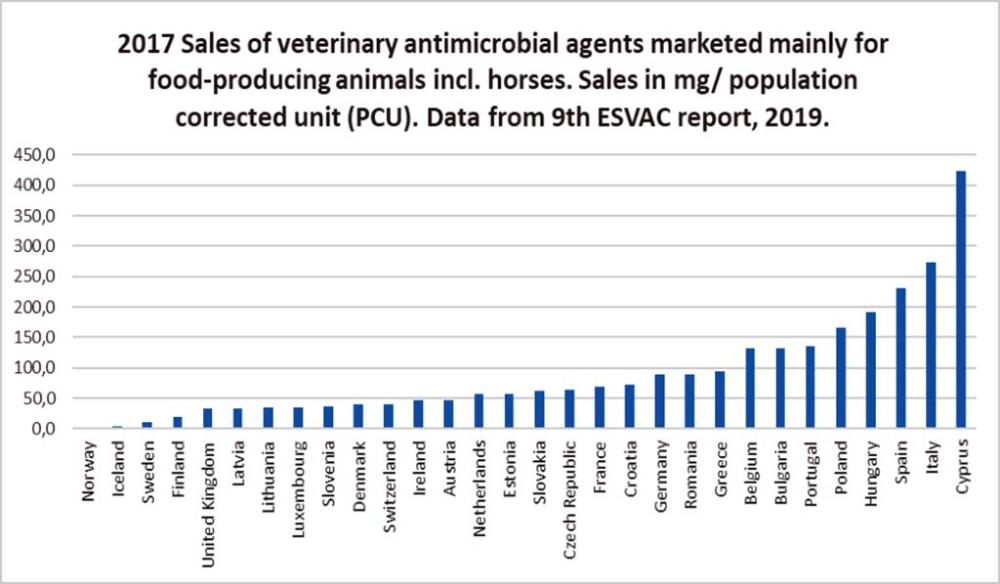Sustainable beef production in Finland
Ajankohtaista
Sustainable beef production in Finland
01.11.2019
Finnish beef production is one of the most low-carbon in the world. The amount of water required by Finnish beef production is half the global average. One way to reduce global problems is to choose Finnish meat.
Less stress over water usage
Finland has plentiful water resources. Over the year, more rain water falls than evaporates, and new groundwater is constantly formed. Beef production requires a lot of water. The average figure across the world is 15,400 litres per each kilogram of beef produced. This figure is halved in Finland at about 7,000 litres.
Many other beef-producing countries suffer from a shortage of fresh drinking water. The lack of fresh water is a major global problem, as agriculture, crop growing and livestock production consume all of 70 per cent of the water used by man. It is expedient to concentrate food production requiring a lot of water in locations with a good supply.
The water footprint of Finnish beef is small on the global scale and compliant with sustainable development. Even though Finland has ample supplies of clean fresh water, almost half of our water consumption is created abroad in the form of imported products. In terms of water consumption, choosing beef produced in Finland is a step in the right direction.
The quality control on the farm
The quality control and traceability of foods start on the farm. All livestock is individually tagged and registered. The births, sales and transfers of the animals are strictly recorded.
The health of the animals, farm hygiene and protection from various diseases are of a high standard in Finland, with the use of antibiotics on production animals low on an international scale.
Along with the good health status, the overall welfare of livestock is at a high level and also monitored by the authorities. Pesticides or antibiotics are not used preventatively in Finland, and withholding periods and other guidelines and regulations are carefully observed.
Quality is based on legislation on issues like veterinary drug use, livestock living conditions and welfare, and hygienic fodder and production.
Monitoring system
In addition to legal requirements, Finland has a widely used voluntary e-register, Naseva, to monitor healthcare on cattle farms. The system ensures that all member farms have healthcare contracts with a veterinarian. The contract includes regular visits to the farm. Among other things, the farm is obliged to systematically monitor the yield and animal health. All drugs and treatments administered to the animals may also be recorded in the Naseva register.
Finland's statutory national salmonella control programme ensures that the incidence of salmonella is monitored right from the primary production farm (From Farm to Fork). Consequently, home-reared meat does not contain salmonella bacteria, which is a significant issue in terms of public health.

Family farming
Farms form an important portion of Finnish rural occupations, and they are vital members of their local communities. Finnish agriculture is based on family-owned farms. All beef is produced on family farms. Finnish farms are a balanced combination of meat production and plant production, as all the roughage required by cattle is produced on the cattle farms. The farms also produce feed grains.
Finnish cattle farm production is in balance with the environment. The authorities ensure that the farms have sufficient field area to spread the manure. Almost all farms keep records on each parcel of land, including items like a cultivation plan, details of the fertilisers used, and manure-spreading.
The majority of Finland's area is forested. Agricultural land accounts for just 7 per cent, and the livestock density of farms is low. Therefore, the environmental pressure caused by agriculture in Finland is one of the lowest in the world.
Feeding of cattle
In Finnish beef production, the proportion of roughage in feeding is 50-70 per cent. Cattle convert hay, inedible by humans, into delicious food rich in nutrients like protein, iron and vitamins. In Finland grassland is cultivated efficiently, so the field area required is relatively low. This reduces the climate footprint of beef.
In addition to grass, beef cattle eat feed grains, which are often lower in quality than grains intended for human consumption. Most of the feed grains are also produced on beef cattle farms.
Finnish cattle are not fed with soya. Rape or turnip rape are used as cattle protein feeds, as well as frequently food industry by-products like brewers' grain and distillers' dried grains.
Learn more about the Finnish, responsible way of producing food
See further information on the strengths of Finnish food production methods in international comparison.
aiheet: beef

